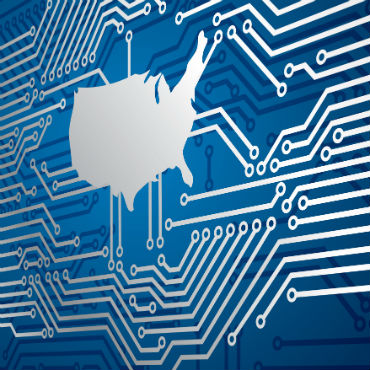What the federal CISO needs to get the job done

Newly appointed federal CISO Brig. Gen. Gregory Touhill needs the right tools and enforcement authorities to secure and defend government networks.

The selection of Brig. Gen. Gregory J. Touhill (ret.) as the first federal chief information security officer is a key part of the President's Cybersecurity National Action Plan. With the election a week away, it's not clear how long Touhill will be holding the post. Irrespective of who occupies the hot seat, however, the critical question is whether the federal CISO will have at his or her disposal the tools and authorities necessary to get the job done. Without them, the country will end up with a CISO in name only.
The CISO is charged with protecting government networks and critical infrastructure at a time when cyber threats continue to increase rapidly in sophistication, breadth, and speed. Concurrently, enterprise information systems and services are increasing in size, distribution, functionality, and value -- thereby increasing the potential surface for attack.
With such a wide-ranging mandate, the CISO must have the ability to do more than simply conduct policy oversight; he or she must also possess the ability to enforce federal policy. This requires a cyber defense that is as tightly integrated as possible, across the full span of the federal enterprise.
The current operational tempo reinforces the challenge, with technically advanced and determined state and non-state actors making headlines regularly for their targeting of U.S. systems and assets in both the public and private sector. The extent of these intrusions has been startling, leaving neither agencies like the Office of Personnel Management, nor cornerstones of the country's business community, such as the nation's biggest banks, untouched.
Against this background, the federal CISO will have to reach out widely in order to elicit and share information, explore best practices, and ensure their adoption government-wide. In doing so, Gen. Touhill and his successors would do well to look to industry, where the role of the CISO has had greater opportunity to evolve and where associated best practices have, correspondingly, reached a certain level of maturity.
The National Association of Corporate Directors' June 2014 "Cyber-Risk Oversight Handbook" and January 2014 analysis, titled "Cybersecurity: Boardroom Implications," offer building blocks for action and mindset that remain timely and relevant for federal purposes. The two documents contain a series of principles and questions designed to serve as a framework for defining and enacting duly diligent cyber-risk management practices at the executive level, both before and after a cyber breach.
Information sharing within an enterprise is a key challenge for government. Agency-level CISOs may not engage with one another. While partnering with peers remains a work in progress on the industry side, too, the handbook's tenets also retain value for the government as it operationalizes the federal CISO position.
As envisioned, the federal CISO post is to serve as a focal point for governance, from policy and planning to compliance. To the extent that this mission is placed outside the remit of the CISO or compliance exemptions are granted, the overarching goal of shoring up the country's cyber defenses will be undermined.
The point is reinforced by experience in the private sector, where security and a host of related functions have been concentrated in the CISO position, in order to integrate work on everything from regulations and standards to technology evaluation and integration to incident response planning and communications strategy.
As new technologies are added to the cyber defense arsenal, it is important to incorporate these instruments in a cohesive way that continually appreciates not only enterprise-wide security but also organizational architecture, culture, and processes. If policies are mandated but not enforced, additional costs will be realized downstream, as remedying after the fact is almost always more expensive.
From a more tactical viewpoint, two constructs that demonstrate the value of an integrated cyber defense are: the Financial Services Information Sharing and Analysis Center (FS-ISAC) and the Defense Security Information Exchange (DSIE) of the Defense Industrial Base (DIB) Sector Coordinating Council.
The DSIE focuses on "developing and sharing actionable cyber information" in order to bolster "member and community capabilities for effective prevention against, as well as proficient detection and mitigation of mature cyber threat activity." The DSIE has proven its worth over time to members and the environment of trust that has been created is instructive, as it is the foundation upon which rests the ongoing exercise of collaboration based on mutually shared interests.
The FS-ISAC is similar in its global scope and efforts at "distilling threat information into actionable intelligence." Here again, members work with the U.S. government to advance the protection of critical infrastructure, because the threat extends beyond the military context to civilian/commercial concerns.
Both models should serve to encourage greater intragovernmental and public-private cooperation.
A poll of experts conducted in March 2016, just weeks after the creation of the federal CISO post, suggested that a strong majority of respondents were "cautiously optimistic about the new CISO's ability to drive change across the government" (full disclosure: we participated in that survey). Realizing those aspirations will not be easy -- bearing in mind that the CISO is the linchpin charged with ensuring that all constituent parts, from federal components to their state and local counterparts to contractors and beyond, work together in concert; but continuing to strive to do so is surely in the nation's best interests given the consequences of failure.
Clearly the federal CISO has his work cut out for him. Let's hope he succeeds.


